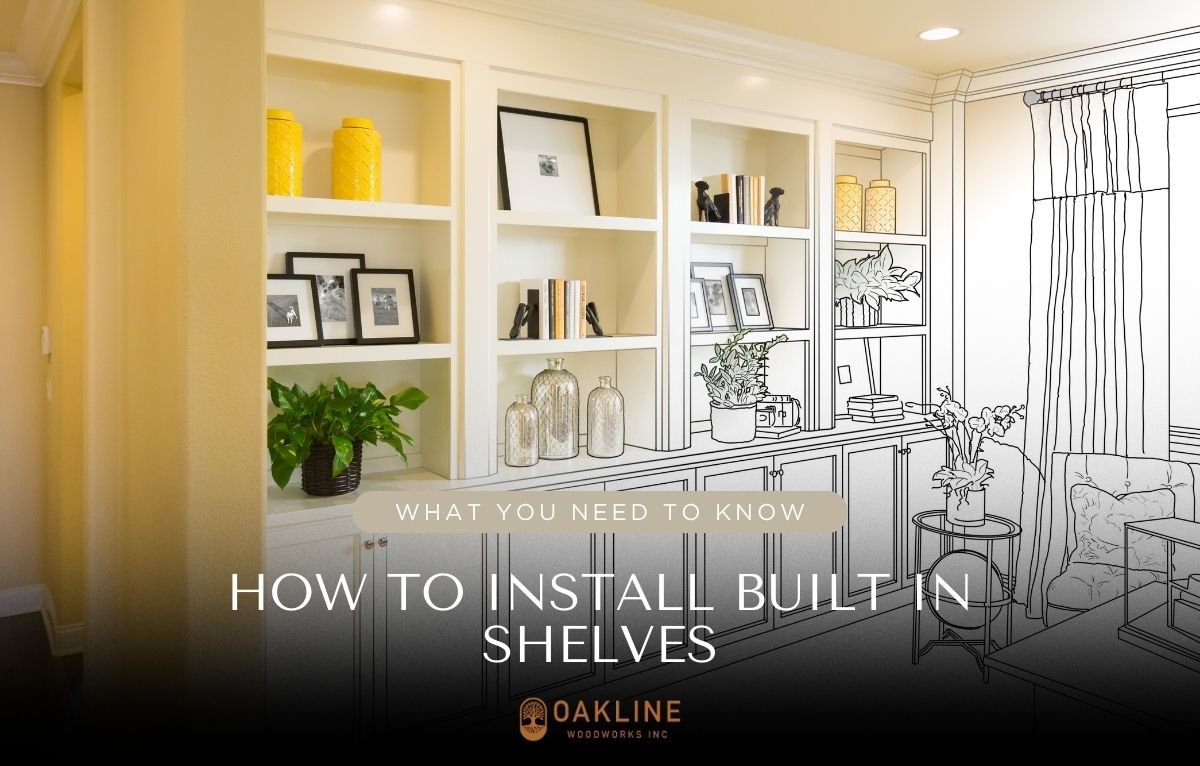
Adding built-in shelves is one of the most effective ways to bring both character and function into a room.
Homeowners often search for advice on how to install built-in shelves because they want a solution that looks custom, holds up to daily use, and elevates the space.
A successful installation requires planning, the right materials, and careful execution. Done well, it creates storage that feels intentional and built into the architecture of the home rather than an afterthought.
The first step is deciding what role the shelves will serve. Some built-ins are designed for books and display, while others may be intended for heavy storage.
Understanding the weight and type of items the shelves will hold determines both the dimensions and materials needed.
A design that feels balanced with the rest of the room will appear seamless, while shelves that are out of proportion can make the space feel awkward.
It helps to take measurements from floor to ceiling and wall to wall, noting any outlets, vents, or baseboards that may affect construction.
Sketching the design on paper or with digital tools can clarify spacing and layout. Precise planning at this stage saves time later and avoids mistakes that can be difficult to correct once the build begins.
Once the design is set, assemble all the materials and tools needed for the project. Typical supplies include plywood or hardwood boards, wall studs or brackets for support, screws, nails, wood glue, and finishing materials such as trim or molding.
It is also helpful to collect the core tools before starting. These often include:
Having everything on hand before cutting wood ensures that installation runs smoothly. This also allows you to compare finishes, select paint or stain colors, and confirm that the trim style complements the rest of the room.
A careful gathering process at this stage is a foundation for a clean, professional-looking final product.
Before installation begins, the area should be cleared and cleaned. Remove existing shelving, patch holes in the drywall, and mark out the lines where the new shelves will sit.
Using a stud finder, locate the wall studs to secure the framework. Marking these clearly ensures the shelves will be anchored to solid support.
It is also wise to protect the flooring and surrounding walls with drop cloths. Built-in projects create dust and involve cutting, sanding, and painting.
Taking protective measures prevents unnecessary damage and makes cleanup easier. Preparing the space properly allows the installation to move forward without unexpected delays.
At the core of any built-in shelving project is the frame. The frame provides structure, stability, and shape. Begin by cutting vertical supports and securing them directly to the wall studs.
Once these are set, add horizontal supports at the top and bottom to create a boxlike structure. From there, additional supports can be added depending on how many shelves will be included.
To keep the frame level and plumb, use a spirit level during each step. Accuracy here is essential because any unevenness will be visible in the final product.
Once the frame is in place, attach the shelf boards, securing them firmly to the supports. Wood glue along with screws can ensure a long-lasting hold. This is the stage where the shelving starts to take form and the room begins to transform.
Raw shelving often looks incomplete until trim and finishing details are added. Trim conceals seams, covers gaps, and provides a polished edge.
Depending on the style of the home, trim can be simple and clean or more decorative with molding details.
Once trim is attached, sanding all surfaces smooths out imperfections and prepares the wood for paint or stain.
A coat of primer followed by paint or stain enhances both durability and appearance. White paint offers a crisp, built-in look that blends with many interiors, while natural wood finishes add warmth and texture.
The finishing stage requires patience, but it is the step that truly turns raw boards into shelves that feel integrated with the home.
For homeowners tackling the project themselves, this short checklist can help:
Following these steps produces a more professional finish and ensures the shelves will look sharp for years to come.
Once the shelves are installed, they become a long-term part of the home. Maintenance helps preserve their beauty and strength.
Wiping surfaces regularly keeps dust from building up, while inspecting for loose screws or shifting boards ensures the structure stays sound.
If painted, shelves may need occasional touch-ups, especially in high-use areas. Stained or natural wood may require resealing after several years to maintain its finish.
The benefit of built-in shelves is that, when properly installed, they last for decades with minimal care.
They not only provide storage but also create a focal point in the room. Treating them as part of the home’s architecture ensures they stay both functional and beautiful.
Learning how to install built-in shelves requires planning, patience, and attention to detail. From measuring and gathering supplies to building the frame and applying finishing touches, each step plays an important role in achieving shelves that look purposeful and lasting.
When maintained well, built-ins serve as both storage and design, bringing timeless value to a home.
For those who prefer a custom approach, Oakline Woodworks offers craftsmanship that blends utility with artistry.
Their built-in shelving and cabinetry solutions are designed to suit individual spaces and needs, ensuring every project reflects both function and style.